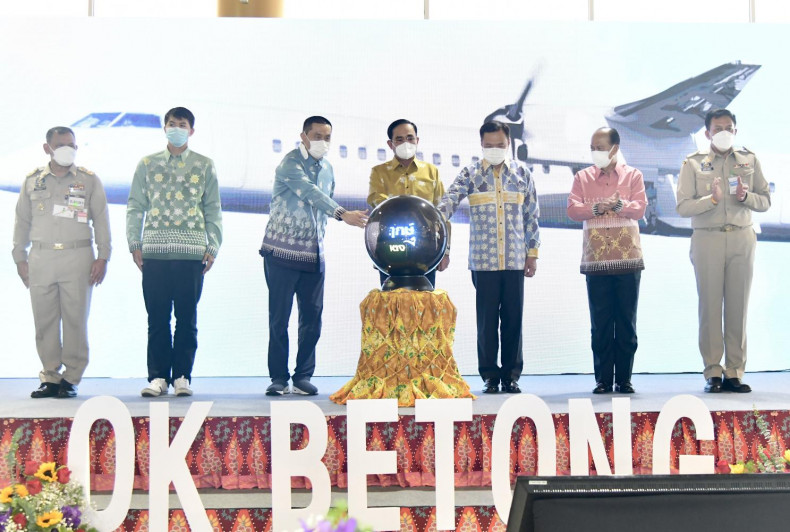
Airport flops in Thailand prove dreamers wrong
Bringing an airport to a province isn’t always a boon. It can be a burden too.
Prime Minister Srettha Thavisin’s policy to make Thailand a regional aviation hub has become an impetus for provinces without an airport or that have one that they don’t like to push for him to gift them a new one.
The provinces and their politicians eagerly wait for the prime minister to visit their areas so they can push for this agenda. The latest cases were his trips to Phayao and Nakhon Ratchasima last month.
Influential politician Thamanat Prompow, secretary-general of Palang Pracharath Party, led locals in drumming up a call for quick construction of an airport in Phayao province, to put it in the same class as neighbouring Chiang Rai and Lampang, which already have one.
The agenda for Nakhon Ratchasima is slightly different. It already has an airport, but business leaders don’t like it because it is quite far from downtown. They have lobbied Mr Srettha to reclaim the old airport, which is much closer, from the air force.
Politicians and business leaders in provinces always believe in the magic of an airport bringing them wealth. They envision it drawing more visitors and traders and injecting cash and economic activities into their home provinces, as has happened in Chiang Mai, Phuket, Samui and Krabi. They try or pretend to forget the harsh reality that an airport can also be a liability.
The latest example is Betong airport in Yala province. The airport was beautifully built with local materials and cost about 2 billion baht. Local leaders and politicians were excited about having the airport and banked on it to woo airlines to fly in visitors and make Betong a vibrant tourist destination. That dream has turned out to be a nightmare because of its short life. The airport is still there but no regular, commercial flights land there because the route is not commercially viable, even after then prime minister Prayut Chan-o-cha, his cabinet and Yala veteran politician Wan Muhamad Nor Matha promoted it by travelling there themselves.
Nakhon Ratchasima airport is another example. Locals blame the Department of Airports for the inconvenient location that makes it unattractive for travellers. The reality is airlines are not interested in flying there because of the route’s questionable profitability.
Nakhon Ratchasima is close to Bangkok and going there by bus is much more convenient and probably quicker too. One passenger told Pantip, an online forum, that it took her about four hours travelling from home to the northeastern city when she went by air. “Taking a bus took less time,” she wrote. A high-speed train from Bangkok to Nakhon Ratchasima would virtually kill the airport if it gets off the ground. Like Betong airport, Nakhon Ratchasima airport remains open but no airlines are interested in flying there.
If we follow the fate of those two, an airport in Phayao could be the next victim. The plan to build it seems too advanced to make a U-turn, as the blueprint is ready and the location has been plotted, yet the problem is still the same as with other deserted or rarely used airports: airlines have to be convinced to land there if profits are to be made on the endeavour.
Passenger demand is the key to airline profitability on any route. Phayao is not a commercial or tourism hub, and although it offers attractions for tourists, they also have the choice of flying fly to Mae Fah Luang airport in Chiang Rai. Due to competition among airlines, Mae Fah Luang airport can offer more flights and cheaper fares. Chiang Rai is only about 100 kilometres or about 90 minutes drive from Phayao.
The Department of Airports already has about 30 airports to take care of, and some are deserted, like Betong, Phetchabun and Pattani, or are sadly underused, such as Sakhon Nakhon and Roi Et. Building one is costly and benefits will go to the province if it works as planned. But burdens will go directly to the department if an airport cannot make a profit as it has to set aside a budget for personnel and maintenance even without a single aircraft landing there. The province that hosts the airport doesn’t have a financial responsibility to share.
Source: https://www.bangkokpost.com/opinion/opinion/2779755/airport-flops-prove-dreamers-wrong

